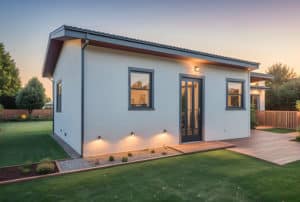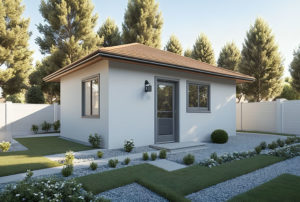





A link to download your FREE brochure will be in your inbox in 3 minutes



















The final price may vary based on project specifics.
To get a free accurate quote tailored to your needs, book a consultation with us today!

The price per square foot provided is an average and may vary depending on project-specific details such as materials, location, complexity, and other factors. Actual costs may differ from the average provided.
It is recommended to obtain a detailed quote based on the specific requirements of your project.

Please note that the monthly payment displayed on this page is an estimate and is subject to variation based on the selected loan product, applicants credit score, loan amount, and other financial details. Actual monthly payment may differ from the estimate provided.
It is recommended to seek advice from a financial advisor or loan officer to obtain precise payment information tailored to individual circumstances.
 Your Trusted
Local Contractor
Your Trusted
Local Contractor

An ADU project may be a great option for any homeowner in need of an in-law suit to accommodate a family member, an accessory unit for rent, extra storage space, or a home office to work remotely with clients.
In a scenario with a limited backyard space, the perfect solution lies in selecting a compact ADU floor plan. The promising aspect is that with a meticulously planned and strategically constructed 500-square-foot unit, you can enjoy the comforts of ADU home life without any disruptions.
In this article, we will explore modern and efficient ADU construction projects that fall under 500 sq. ft. and discuss the benefits and nuances of organizing your living space this way.
The exact type of small ADU layout depends on your property characteristics, building rules, your plans for ADU use, and your budget. Here, we’ll take a look at several possible ADU plans to accommodate versatile homeowner’s needs.
Studio ADUs are a great option for individual residents or those who seek rentals for couples. The open floor plan may have a hotel-like ambiance with ample bedrooms, a posh bathroom, a joined living room, a dining room, and a minimalist kitchenette, providing guests with the feel of a luxury getaway.
In comparison to studio ADUs, 1-bedroom ADUs have separate rooms and provide residents with more privacy. A one-bedroom ADU below 500 sq. ft. may be quite spacious, with a generous living room, a modern kitchen equipped with full-sized appliances, a functional bathroom, and ample storage.
The hardest to find among 500 sq. ft. floor plans is a floor plan with two sleeping areas. However, it’s still possible. For instance, you can put two bedrooms on one side of the house and position a bathroom in between them to separate the areas. Another idea is to have a loft-style layout. One bedroom can be on the ground floor, while the other one is in a loft space.
If you’re thinking of building a compact ADU, you probably care about the efficient use of space. For example, let’s assume you have a narrow lot. In this case, ADU builders can add an I-shaped ADU to your land, which is easy to construct due to its straightforward design. It’s also very functional because it allows for plenty of room configuration possibilities.
On the other hand, if your lot has other buildings on it or your main house occupies space close to the lot center, putting an L-shaped ADU may be the best-suited solution. Not only does it work effectively around existing structures, but it also usually offers good ventilation and exposure to natural light, as well as giving you dedicated space to install a nice porch.
For properties with limited space and existing garages, an ADU garage floor plan is a good fit. Actually, in certain cases, you can transform your garage into an additional living quarter (garage conversion). But if you need one to park your car in, the above-the-garage ADU allows you to both save space and bring a convenient ADU design into existence.
If you or your family choose to build an ADU in the backyard of your property, you’ll need to study building codes and regulations in your particular city. Or, you can hire an expert to do this on your behalf.
In any case, it’s important to know that the overall costs of your ADU project consist of the following items of expenditure:
It depends on the complexity of the design and materials you use, but a 500-square-foot ADU typically may require $100,000.
In Sacramento, some jurisdictions establish reduced fees for permits if your ADU is smaller in size. Yet, ordinary fees for 500 sq. ft. units range from $5,000 to $15,000.
Depending on the ADU size and its impact on the environment, infrastructure, and community, these fees in Sacramento could range from $3,000 to $10,000. Note that in many cases, ADUs smaller than 500 sq. ft. are exempt from particular types of impact fees, which makes such constructions more beneficial for homeowners.
Connecting water, electricity, sewer systems, and other goods to the ADU may cost from around $5,000 to $15,000, depending on the ADU type and extent of connections required.
If you need professional designers to develop an ADU home plan or other consultants to, for example, deal with the permitting process or particularly intricate aspects of the project, you’ll need to pay $2,000 or more.
If you’re thinking of specific customized, detailed plans and structural designs, architects and engineers are irreplaceable, potentially adding more than $2,000, $5,000, or even $10,000 to your bill.
The overall price you pay for clearing out your lot, grading, leveling, and other landscaping adjustments may vary depending on the original characteristics of the plot. It may make up around $5,000–10,000.
To sum up, it’s evident that, depending on the scope of work needed, a 500-square-foot ADU may also turn out to be costly. That is why many homeowners turn to professional ADU contractors. They already have established relations with trustworthy vendors, skilled workers, and qualified specialists, which can make the end price of an ADU built smaller.

How do you create more space in a smaller ADU? An ADU doesn’t have to be big to appear spacious. There are several ways to play with the ADU decor, furniture, and item organization, as well as construction features that a homeowner can use to increase the roominess of the compact living space.
Let’s take a glance at some of them:
Spaces full of light usually look more open. And extra mirrors reflect light, spreading it around. They can expand the space visually even more, creating an illusion of depth.
Fair colors reflect light better, which makes the room appear more spacious than it is. Minimalistic, decluttered design and an open floor plan let your eye travel unhindered, creating a sense of airiness inside your ADU.
Tall ceilings make you pay attention to the extensive vertical space rather than the limited horizontal space. Besides, you can use vertical space for storage or sometimes arrange for a one-bedroom there.
These types of doors save space as they don’t require space to be opened and closed. This design enables you to put some furniture pieces in there. More so, in their open state, they provide visual continuity between rooms.
Clever integration of such storage spaces (on the walls, under the bed or sofa, inside the ottoman, etc.) allows you to create a clear and unimpeded view.
A Murphy bed, a sofa bed, a foldable table, or a storage coffee table—all of these are good examples of utilizing the same space for dual purposes.
All in all, the exact number of square feet is not a big deal if you incorporate functional features and make use of natural light, a high ceiling, or other characteristics of your property.
You can find the answer to this question in California laws. The minimal ADU size is 150 sq. ft. with a 70 sq. ft. bedroom, a 50 sq. ft. kitchen, and a 30 sq. ft. bathroom. If you don’t have enough space in your backyard, you can transform not only your garage but even a part of your home—an attic or a basement—into an ADU.
The most common way to finance your project is to take a home equity loan or a construction loan. You can also refinance your primary residence. However, the good news is that many jurisdictions offer financing programs, grants, and governmental programs created specifically for sponsoring ADUs. For instance, CalHFA’s ADU Grant Program.
Sure, you can bring such an idea to life. But since homes on wheels are mobile homes, besides local regulations and zoning laws, you’ll also have to take into consideration road transport regulations. Also, when you build a tiny RV home, it’s strongly advisable to opt for lightweight and lasting materials.
In the laws of Sacramento, California, there’s a proposition that a person who owns a single-family or multi-family lot may build an ADU that does not exceed 1000–1200 sq. ft. If you add such units to your property, you’re able to use them as rentals, backyard cottages for guests, granny flats, offices for remote work, or hobby houses with a home gym or a private library.
Get a First Look at Real ADU Projects